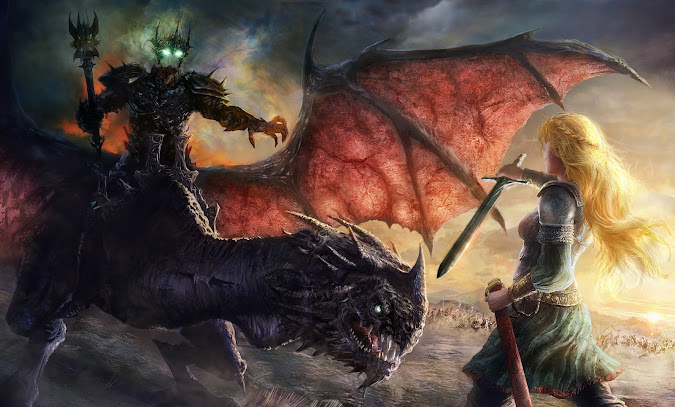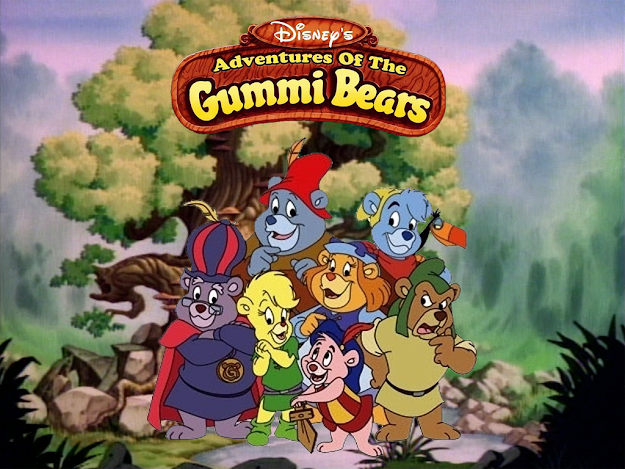Reading Advanced Dungeons & Dragons, Part 26
SAVING
THROWS
Following the Combat Matrices are the Saving Throw Matrices. In AD&D, rather than having ability-based saves as in later editions, saves were solely class and level based--that is to say, you did NOT add any ability bonuses to saving throws.
Saves fell into one of five categories:
Following the Combat Matrices are the Saving Throw Matrices. In AD&D, rather than having ability-based saves as in later editions, saves were solely class and level based--that is to say, you did NOT add any ability bonuses to saving throws.
Saves fell into one of five categories:
- Paralyzation, Poison or Death Magic
- Petrification or Polymorph
- Rod, Staff or Wand
- Breath Weapon
- Spell
Footnotes clarify that Polymorph wand attacks use the Wand save, Breath weapon attacks that cause petrification or polymorph use the save for their effect, and spells for which another saving throw is specified (eg. polymorph) use the appropriate save rather than the general spell save.
Other notes clarify where sub-classes fall (druids save as clerics, rangers as fighters, etc.)
Monsters save as Fighters, equating Hit Dice to Experience Level (the precedent I earlier referenced) with again each +4 adding 1 to the total hit dice for purposes of saves. The only exceptions are monsters with class abilities (which save as the appropriate class) or those with no real offensive capability, which save according to their closest class area of expertise. No examples are given and at the moment I'm unable to come up with one...
Finally, non-intelligent creatures save at a level equal to 1/2 their total hit dice, rounded up, except against poison and death.
Following the basic Saving Throw Matrix is a table for Saving Throw Matrix for Magical and Non-magical Items. This table breaks down items by their core substance rather than trying to provide an exhaustive item list. Thus, instead of swords, knives, axe heads, etc., it has "Metal, hard." The list of item descriptions runs down the left, with the attack forms across the top. There are eleven attack forms: acid, crushing blow, normal blow, disintegrate, fall, fireball, magical fire, normal fire, frost, lightning, and electricity.
The text is pretty thorough here. It goes on to say that magical items gain +2 on all saves, plus an additional +1 per point of magical bonus the weapon has. Non-magical items gain +5 against attacks of the same type (ie. metal against metal, fire on fire, etc.) It even deals with items being exposed to extreme cold, then struck against hard objects, and it manages all this in about half a page.
Included in this half-page writeup are explanations of each of the attack types clarifying what is needed for an attack type to qualify as each category. Acid, for example, isn't just a splash. It assumes "a considerable volume of strong acid...or immersion...."
Overall good, useful stuff here and explained with a basic clarity that I personally feel somehow got lost in the shuffle in later editions.
Next is a section discussing Saving Throws in concept. Much of this section is spent justifying the existence of saving throws in game. The real strength of this section is that it really pushes the focus onto creativity and imagination. What if, the text posits, that fighter chained to a rock makes his saving throw against the breath of a dragon? Some people would dismiss such an idea as ridiculous and implausible. But what if...just what if at the last minute that fighter escaped his bonds and dove free? The text encourages players and DMs to actually imagine the situation in which a player character might succeed (or even fail) at his saving throw, and apply it in game. Saving throws, then, should be more than a simple damage-reducing numerical result. This is something else that has gotten lost in the shuffle of "a rule for every situation" later games.
In any case, the bit simply entitled "Saving Throws" on page 80 is well worth a good read and digest, because it really gets to the heart of what the old school is all about, IMHO.
Following this is a section on Saving Throw Modifiers. Rather than an extensive list of fiddly, microdetailed situational modifiers, this section gives four places from which saving throw modifiers come: DM Stipulation (the hated "DM fiat" of the new generation), Rule Stipulations (specific textual attack forms, such as a large spider's poison save always being made at +2), Magical Devices, and Circumstantial adjustments based on environmental factors (a knight in plate armor standing in water when he gets hit by a lightning bolt, for example).
This section introduces the concept that a natural 1 always fails and a natural 20 always succeeds.
Next is a brief blurb about Item Saving Throws, mostly clarifying that it's "do or die" with items--they either save and are fine, or fail and are destroyed.
Artifacts and Relics are discussed briefly, suggesting the DM either make them immune to the need for saving throws, or grant them exceptional bonuses to reflect what they are. The One Ring, after all, could only be destroyed in a very specific way.
Poison saving throws are discussed next, mostly in terms of justifying why poison saves in AD&D are save or die. This comes from the fact that Hit Points do not represent physical damage only. If a player is actually, in fact, subject to a poison attack, it either hits or it doesn't. If it hits, well, poison is deadly by virtue of being poison. The only exception to this rule is when creatures have an exceptionally thick layer of fat or blubber that would prevent the poison attack from penetrating to the bloodstream or musculature of the victim.
Magic Armor and Saving Throws closes out the section on saves. This bit clarifies the circumstances in which an armor's magical bonus to AC adds to saving throws. Specifically against Acid (unless immersed), disintegration, falling, fire, and damaging spells (unless the armor is metal and the attack electrical), but NOT against gas, poison, or non-physically damaging spells.
PROGRESSION ON THE COMBAT TABLES
This section is out of place. It really should've been slotted in between the Attack Tables and Psionic Combat Tables, especially since it's only two paragraphs long. It discusses the aforementioned "Rule of Six" (My designation, not Gygax's). In essence, a character's attack progression is linear until his target number hits 20, at which point 20 repeats 6 times. This both represents the idea of 20 as a perfect hit, and gives the chance to hit more powerful opponents, even if it's only a roughly 5% chance. The text suggests that if the DM wishes to differentiate between the first 20 and those that come after, the first one can be achieved with modifiers while the remaining 5 20's must be natural 20's. This is an optional suggestion, and not a hard and fast rule, however.






Hi,
ReplyDeleteAm I incorrect in thinking that a low Wisdom score in 1st Edition did negatively affected the Magic Save?
You are not incorrect, but it is an exception to the rule, and I'll get to that when I get to reading the PHB, as it's not included in the DMG ;).
ReplyDeleteOops, you're right.
ReplyDelete--Sorry. :o